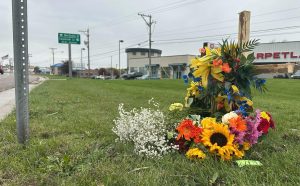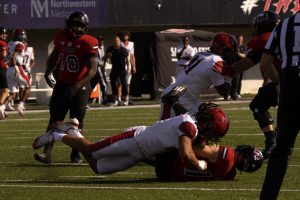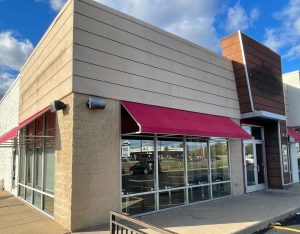Students learn to teach blind
August 30, 1990
You cannot teach what you do not know.
That is the basic philosophy behind an NIU program to enhance the orientation and mobility and rehabilitation of the blind, said instructor Thomas Langham.
The program offers NIU graduate students the chance to learn how to teach blind and visually-impaired students to rely on their four other senses in order to become independent members of society.
Students learn techniques that can be used to promote independence in the blind including a sighted-guide technique and a long-cane technique, Langham said.
The “long cane” is the long white cane used by the blind to guide them when walking.
The sighted-guide technique allows two students, one who wears a blindfold and one who acts as a guide, to get a feel of what it is like to be blind and rely on other senses, Langham said.
The technique also allows the guide to learn some fundamental concepts of dealing with the blind, such as when to verbally guide blind people and when to let them simply rely on their other senses, said Wendy Blanchard, a graduate student who, along with other NIU graduate students, is working toward a master’s of science degree in education.
“When students are blindfolded, they are responsible to stay alert and in touch with the environment,” said graduate student Mike Brust.
Techniques are used in a progressive manner that allows the blind and visually impaired to advance through different stages of independence, Langham said.
Independence training begins with indoor classes and progresses through sighted-guide training, self-protection training, long-cane training and on to walking through residential areas. Eventually, students learn to use the Huskie Bus Line as well and the El train in Chicago, Langham said.
The program uses techniques designed to “maximize the safety of the (blind) individual,” Langham said.
Students in the program learn the techniques of the underlying principles used to teach the visually impaired, Langham said.
“You (students in the program) really have to learn to teach,” he said. “We don’t teach how to be blind, we teach the modeling of behavior.”
Langham said learning spatial relationships and time-distance relationships are “indispensable to teaching the visually impaired.”
He also said working with the blind is an interactive process that can affect people’s lives in a positive way.
Jo Poniske, another NIU graduate student involved in the orientation and mobility program, said the program “allows for a creative aspect because you must adapt (the techniques) for every new client.”
While there are times when the program can lead to frustrations, graduate student Denise Kistler said, “you have look at the ones (blind students) that progress, rather than focus on the frustrations.”






